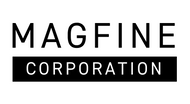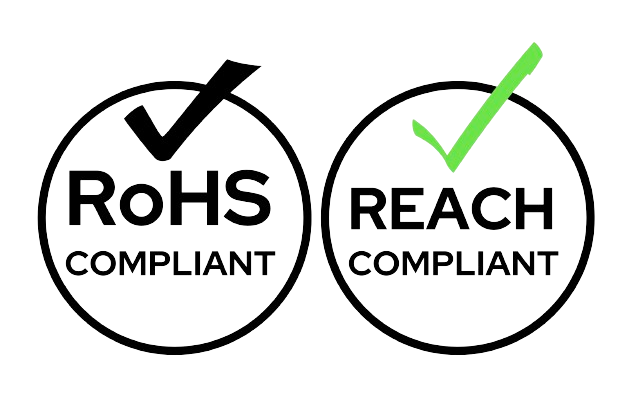Air transport of magnets
Air cargo packaging
In compliance with the stringent regulations outlined by the International Air Transport Association (IATA), magnetic materials, including permanent magnets, are subject to specific guidelines when transported via air cargo. These regulations are detailed within the IATA Dangerous Goods Regulations to ensure the safety of onboard instrumentation and the overall integrity of air transport.
At Magfine, we prioritize adherence to these imperative standards. As such, all magnetic products intended for air transportation undergo meticulous magnetic leakage tests, meticulously aligned with IATA directives. This meticulous process guarantees compliance with magnetic dispersion regulations, reassuring clients of the safe and secure transit of their materials.
Moreover, Magfine offers the provision of official certificates documenting the successful completion of these magnetic leakage tests. These certificates serve as tangible evidence of compliance, providing clients with peace of mind and facilitating seamless air cargo logistics.
Trust Magfine to uphold the highest standards of safety and regulatory compliance when it comes to the packaging and transportation of magnetic materials via air cargo.

Magnet screen
Title: Effective Magnetic Field Containment with Iron Plates
Magnetic screens offer a straightforward solution for containing magnetic fields without the need for specialized technology. Utilizing readily available magnetic materials such as iron plates, the dispersion of magnetic fields generated by permanent magnets can be effectively controlled.
When a magnet is surrounded by iron plates, the magnetic field lines naturally adhere to the iron surface due to magnetic attraction. This phenomenon allows the magnetic field lines to flow inside the iron plate, where they are absorbed, significantly reducing field dispersion.
For optimal results, thicker iron plates with high iron content prove most effective in blocking magnetic field lines. The larger and stronger the magnet, the more crucial it becomes to employ robust shielding. Even when faced with formidable magnetic forces, strategically placing iron plates around the magnets at a certain distance can further enhance field containment.
To illustrate this principle, consider a simulation featuring a φ100mmX70 millimeter neodymium magnet encircled by iron plates. The diagram vividly demonstrates how the inclusion of iron plates of specific thickness effectively contains the magnetic field lines within, preventing undesirable leakage beyond the designated area.
By leveraging the inherent properties of magnetic materials and employing strategic placement techniques, Magfine ensures reliable containment of magnetic fields, offering practical solutions for various applications.
| A | B | C | |
| Iron Plate | SS400 | SS400 | SS400 |
| Thickness of the iron plate | - | 10mm | 20mm |
| Dimensions of the iron plate | - | 220mm X 190mm | 240mm X 210mm |
| Magnet dimensions | φ100mm X 70mm | φ100mm X 70mm | φ100mm X 70mm |
| Space between the metal plate and the magnet | - | 50mm | 50mm |

Q & A
Are magnets dangerous?
Not all magnets are subject to hazardous materials classification, yet certain criteria dictate their categorization under transportation regulations. Permanent magnets, integral to various electrical equipment, typically do not fall under hazardous material classifications due to their common usage and manageable magnetic power.
However, according to UN2807 regulations, magnetized materials with significant magnetic strength are categorized under Class 9, rendering them hazardous materials for air transport. Products exhibiting weaker magnetic forces, such as stationery, small tools, and novice driver markings, are exempt from this classification due to their limited size and minimal risk.
Despite variations in magnetic strength, all magnets are subject to scrutiny during export declaration procedures with customs. Regardless of their magnetic force, they are generally treated as hazardous materials to ensure comprehensive regulatory compliance and safety protocols.
Understanding these distinctions is crucial for businesses involved in the production, transportation, and export of magnetic materials, enabling informed decision-making and adherence to regulatory requirements.
What is a magnetic material?
Magnetic materials are characterized by their ability to attract or repel iron. This inherent property distinguishes them from other types of materials based on their magnetic behavior.
Electromagnets, however, do not fall under the category of magnetic materials. Unlike permanent magnets, electromagnets require an electric current to exhibit magnetic properties. In the absence of this current, they do not possess any attractive or repulsive capacity.
Understanding the difference between magnetic materials and electromagnets is essential for various applications, ensuring the appropriate selection and use of materials based on their magnetic properties and functionality.
What are the definition and evaluation standards of magnetic materials admitted for air transport established by IATA?
According to IATA Dangerous Goods Packing Instructions Regulation 953 (formerly 952), the definition is as follows:
| Categories | Articles | Airplane transport | Transport conditions | Criteria |
| A | Non-magnetized materials | Yes | General cargo | Any material which, when packaged for air transportation, demonstrates a magnetic field strength of less than 0.159A/m (0.002Gauss) or produces less than 2 degrees of deviation of a magnetic compass, at a distance of 2.1m from a random point on the surface of the packaged material. |
| B | Magnetized materials | Yes | It is necessary to declare that it is magnetized material and attach the IATA label N.UN2807. | Any material which, when packaged for air transportation, demonstrates a magnetic field strength of less than 0.418A/m (0.00525Gauss) or produces less than 2 degrees of deviation of a magnetic compass, at a distance of 4.6m from a random point on the surface of the packaged material. |
| C | Magnetized materials | No | Air transport not permitted | Any material that passes A and B. |


What are magnetic products?
Products and components utilizing magnets are inherently magnetic and are commonly integrated into various applications both internally and externally. Magnets are widely employed in industrial components such as motors, speakers, and hard drives. Additionally, everyday items like stationery, clips, novice driver markings, and magnetic therapy devices also incorporate magnets.
While these everyday products typically do not emit dangerous levels of magnetic force and are generally not classified as hazardous, certain precautions are necessary. In some instances, if the magnetic force accumulates to significant levels, these products may be categorized as magnetized materials under the International Air Transport Association (IATA) regulations.
Therefore, it is essential to monitor and manage the magnetic properties of such products to ensure compliance with safety standards and avoid potential reclassification as hazardous materials. Understanding these nuances helps in the safe and efficient use of magnetic products across various industries.
What is the packaging method to shield magnetic fields and magnetic shields?
While there are various methods for packaging magnetic materials, there are no specific regulations mandating the use of shielding. However, to effectively block magnetic fields, it is advisable to place metal sheets or iron plates on all four sides of the package's interior. This method is straightforward and highly effective in containing magnetic fields.
The effectiveness of these metal sheets as magnetic shields increases with their thickness. The thicker the sheet metal, the more efficient it will be in blocking and containing the magnetic fields.
To ensure the magnetic fields are within safe limits, we utilize a high-precision, high-resolution tesla meter capable of measuring from 30μT. This instrument allows us to verify that the magnetic values are within the safety threshold, ensuring compliance and safety in the transportation and handling of magnetic materials.
Any magnetic shielding limitations?
If magnetic fields persist outside the package despite using iron plates, increasing the number of iron plate layers can enhance shielding effectiveness. This additional layering helps block the magnetic fields more efficiently.
However, for magnetic materials, including magnets weighing more than 1.5 kg, the magnetic force is significantly powerful, making it challenging to block the fields completely. Even if successful shielding is achieved, any damage to the outer packaging could lead to serious accidents.
To mitigate these risks, we avoid transporting such high-powered magnetic products by air. Instead, we opt for surface transport, ensuring safer handling and minimizing the potential for accidents due to magnetic field leakage.
By employing these precautions and choosing appropriate transportation methods, we prioritize safety and regulatory compliance in the shipment of magnetic materials.
What is the IATA label N.UN2807?
1. Labeling: Regulation 7.4.1 of the IATA Dangerous Goods Regulations specifies that a blue label with a white background is used for magnetized materials. This label indeed includes the instruction "KEEP AWAY FROM AIRCRAFT COMPASS DETECTION UNIT" to ensure safe loading positions away from sensitive aircraft instruments.
2. Classification: Magnetized materials are classified under UN2807 and fall under Class 9 (Miscellaneous Dangerous Goods). While there is no specific packaging class for UN2807, these materials must comply with the appropriate handling and labeling requirements to mitigate risks during air transport.
3. IATA Code: The IATA code for magnetized materials is "MAG", and they are categorized under ICAO Category 9, which includes miscellaneous dangerous goods.
This ensures that the transportation of such materials adheres to international safety standards, minimizing the risk of interference with aircraft navigation systems.


What are some of the main dangerous goods prohibited for air transport?
The International Air Transport Association (IATA) and other regulatory bodies like the Federal Aviation Administration (FAA) provide comprehensive guidelines on dangerous goods prohibited for air transport. Here are some of the main dangerous goods that are generally prohibited:
1. Explosives: This includes fireworks, ammunition, and detonators.
2. Gases: Compressed, liquefied, or dissolved gases such as propane, butane, and oxygen cylinders.
3. Flammable Liquids: Includes gasoline, alcohol, and acetone.
4. Flammable Solids: Such as matches and certain types of fireworks.
5. Oxidizing Substances and Organic Peroxides: Includes bleach and pool chemicals.
6. Toxic and Infectious Substances: Such as certain pesticides and medical waste.
7. Radioactive Material: Various forms of radioactive substances.
8. Corrosives: Includes acids, alkalis, and wet cell batteries.
9. Miscellaneous Dangerous Goods: Items that pose risks during transport like dry ice and lithium batteries in certain configurations.
For more specific information, you can refer to the Transport Canada website or the IATA Dangerous Goods Regulations manual, which provides detailed guidelines on the subject:
Related References
IATA (International Air Transport Association)
 IATA is an association for worldwide air transport.
IATA is an association for worldwide air transport.
It is an international organization for airlines
operating international flights, travel agencies and other
related industries.
ICAO (International Civil Aviation Organization)
 ICAO is a specialized agency of the United Nations that adopts international standards
ICAO is a specialized agency of the United Nations that adopts international standardsand recommended practices relating to aviation safety,
airport facilities, aviation regulations,
air traffic control systems, communication organisation,
aircraft registration and identification , collection and exchange
of meteorological information, aeronautical charts,
international air transport, arrival and departure procedures at customs etc.


